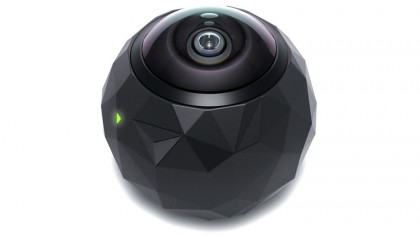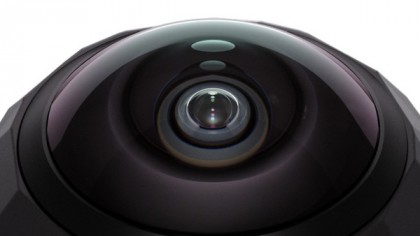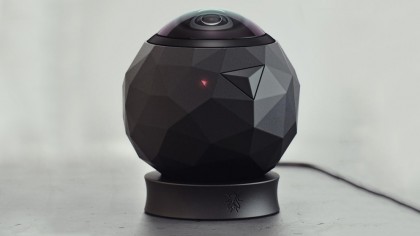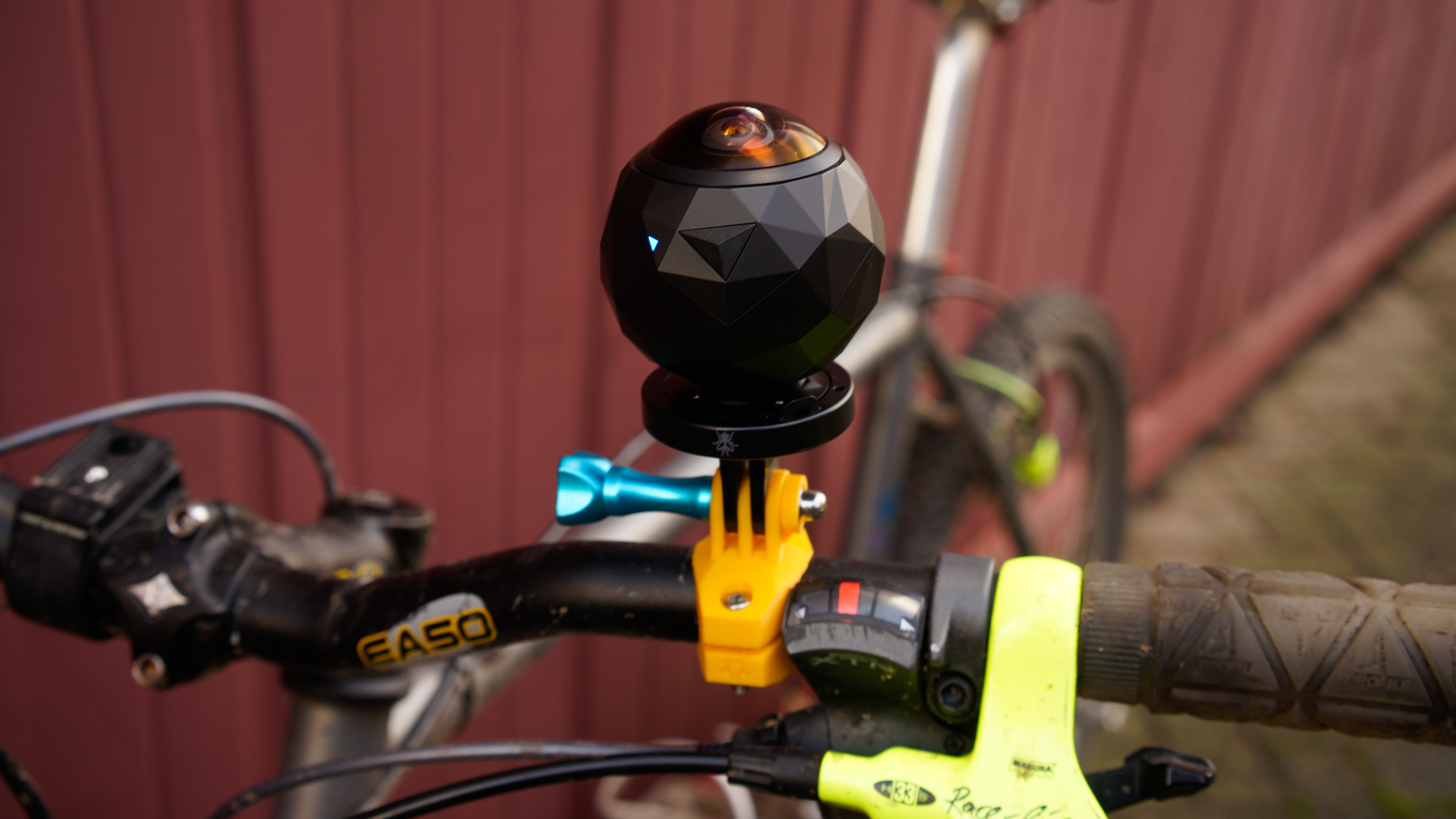TechRadar Verdict
The 360fly captures 360 degree footage without the need for additional holders or accessories. It features just one lens and an app with a clear layout that means you can shoot, upload and share stunning immersive 360 degree video with the same ease as you would with any other action camera.
Pros
- +
Great design
- +
Easy 360 degree footage
- +
Well designed apps
Cons
- -
Footage soft around the edges
- -
Heavier than other action cameras
- -
No settings adjustments
Why you can trust TechRadar
The 360fly is like no other action camera on the market. The popular box or bullet shape and design that is so common has no part in the 360 Fly's DNA; instead the exterior is formed by a series of geometric patterns that makeup the striking spherical shape.
The textured exterior has a hard wearing black finish that is topped by the large 360 degree lens. There's no cover or housing for the camera so this lens is open to the elements, and although you might worry that the lens's direct exposure to mud, grit and water would be a sure fire way to quickly destroy it, we found that during our test it stood up to all conditions well, even when soaked and caked with mud.


The large lens is the unmissable feature topping the camera. It features eight elements with an aperture of f/2.5, a field of view of 240 degrees, a 0.88mm focal length and a minimum focus distance of 30cm.
Below the lens on the side of the spherical body is a small on/off push button that uses the same geometric design as the body – the rest of the body is pretty much clear of any other features except for a small microphone hole. On the base are contacts for charging and the mount socket.
This sealed design means that there is no need for an additional housing and the camera is water resistant up to 5 atm, or 50m – although a small rubber plug does need to be inserted into the microphone hole. This means that the 360fly is perfectly suitable for attaching to a surfboard or shooting underwater for short periods, but deep sea diving would be pushing the camera's waterproofing ability.
Directly in the center of the base and surrounded by the contacts is the camera's mount. This is a proprietary socket design and special mounts can quickly be clicked in. The design holds the camera incredibly well and although it's easy enough to quickly release it on purpose it's unlikely that it will knock free accidentally.
Other than the lens, button and contacts there are no other features on the exterior and the whole unit is sealed. There's no interchangeable battery, memory card slot or USB port, and data transfer and charging both require a small dock.

The dock is nice and small and uses a USB cable to connect to a computer so you can download video files or charge the device through USB. The dock is very simple with a USB socket on the side for the cable and a ring of small contacts on top. These contacts match those on the base of the 360fly. Just pop the camera on the dock and it's ready to charge. If you need to transfer files to your computer then the dock can be used to make the connection – just switch the 360fly on, attach to the dock and the camera will appear on the computer like a regular external drive or action camera.
As there are no controls on the camera, all settings and recording options are controlled through the app. This is available for iOS and Android devices and requires a bluetooth connection. Once connected it enables a live view stream. Unlike normal video streams that are static in their composition, with the 360fly you're able to look around the scene. You can do this by moving the phone around or by using your finger on the screen to navigate and start the 360 video experience.
Ali Jennings is the imaging lab manager for Future Publishing's Photography portfolio. Using Imatest Master and DxO Analyser he produces the image quality tests for all new cameras and lenses review in TechRadar's cameras channel. Ali has been shooting digital since the early nineties and joined Future's Photography portfolio back in 2003.
